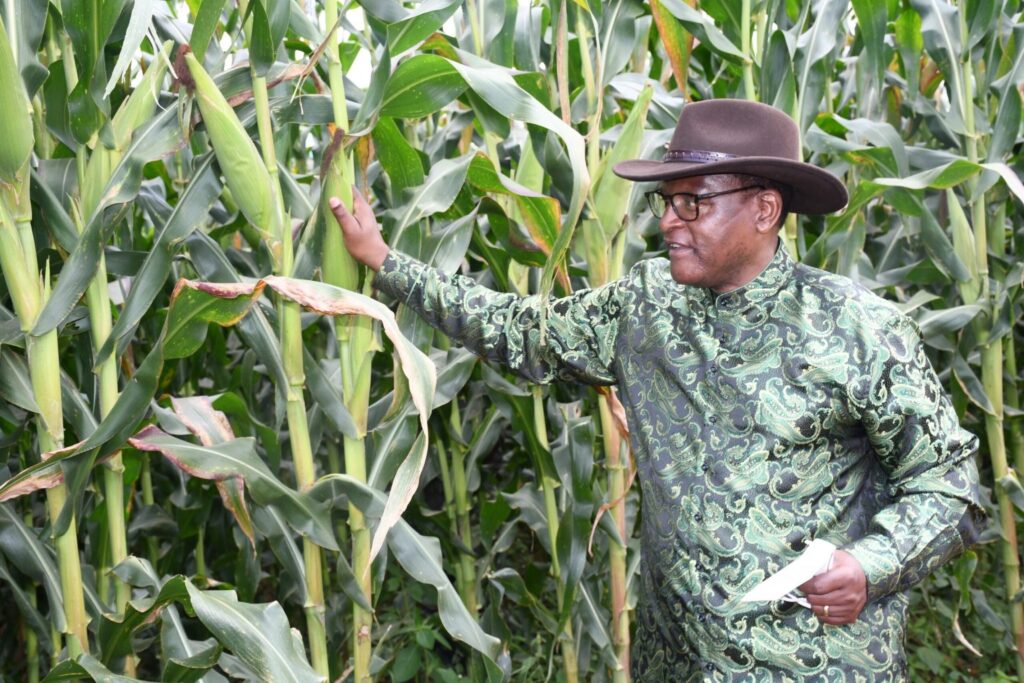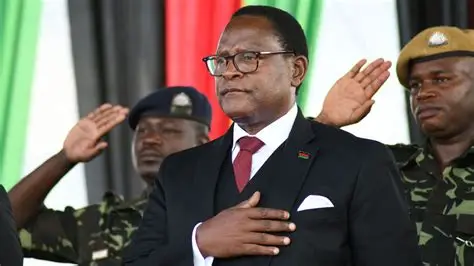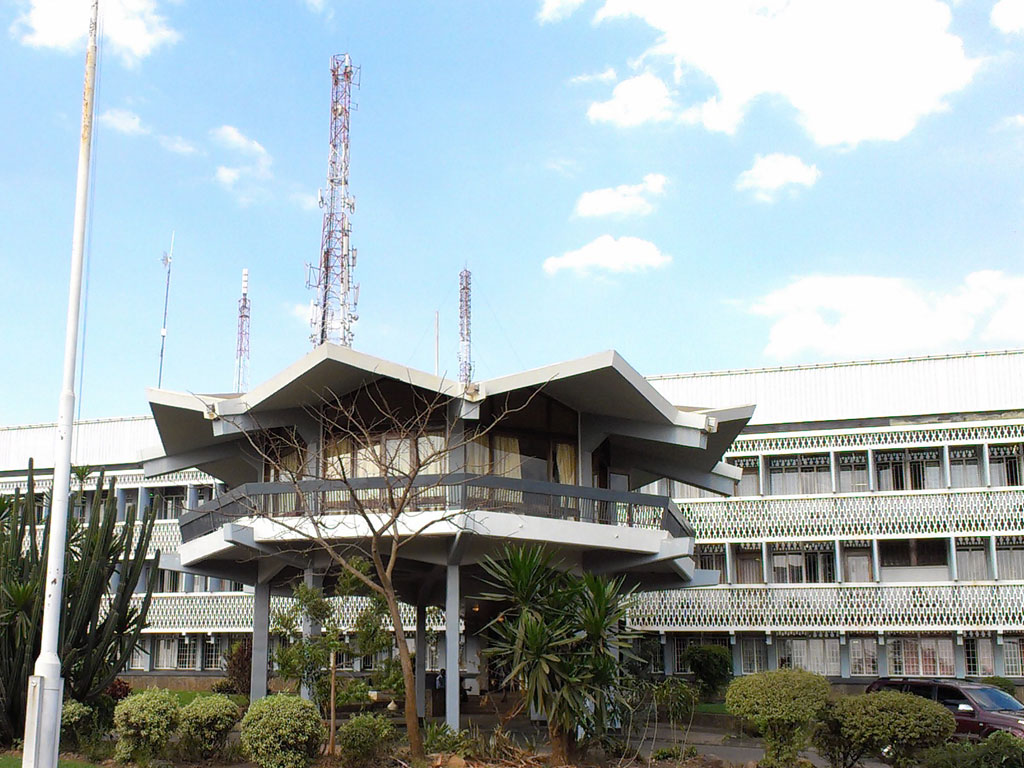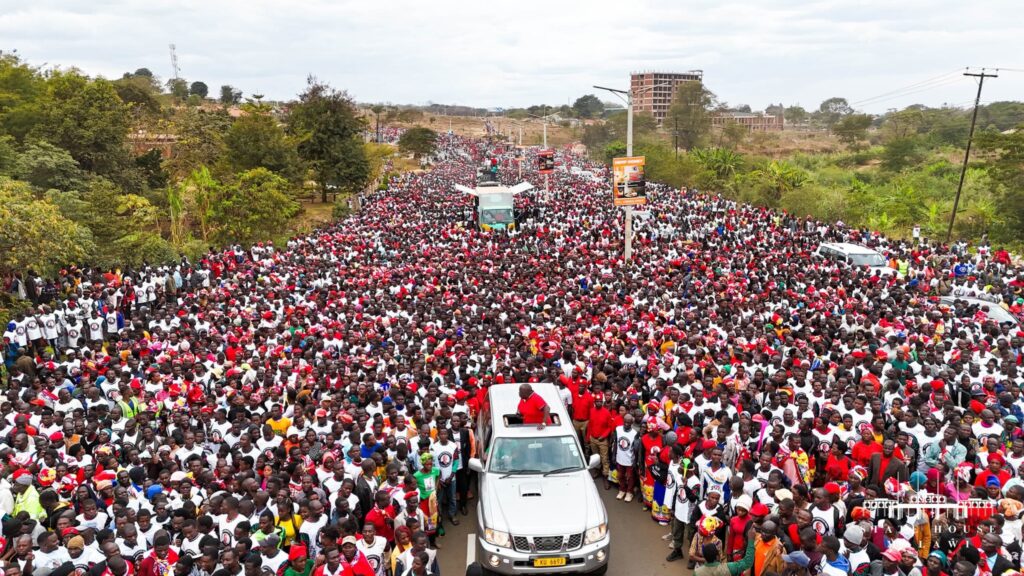Taking Malawi Forward: MCP’s Future Agenda
If the opening chapters of the MCP Manifesto served as a retrospective justification for continuity, the preceding chapters emerge as a detailed proposal for deepening reforms, correcting historical injustices, and achieving inclusive economic transformation.
Framed by the philosophy of a capable developmental state and anchored in the Malawi 2063 Vision, President Dr. Lazarus McCarthy Chakwera’s plan for the next five years revolves around five strategic pillars. These are offered as policy blueprints shaped by past lessons and an acute awareness of present challenges.

Food Security: Make Malawi Feed Malawi
The manifesto’s first and arguably most urgent pillar is food security. Not merely as a policy goal, but as a national identity.
The “Make Malawi Feed Malawi” is a call to action, a return to sovereignty in food production, and a political counter to decades of dependency, mismanagement, and ad hoc emergency responses.
The plan recognizes that the country’s perennial hunger crises are not due to a lack of land, water, or manpower, but rather a collapse of systems and a deficit in bold leadership.
It squarely blames post-1994 administrations for “inappropriate agricultural policies” that dismantled once-viable structures like ADMARC, commercial farming estates, and agricultural extension services. But more importantly, it positions Dr. Chakwera’s administration as the one finally bold enough to fix them.
At the heart of the strategy is a reformed Affordable Inputs Programme (AIP), with plans to link it to an eventual exit strategy through NEEF-backed agricultural loans.
Additionally, the government intends to establish a domestic fertilizer plant, thus breaking the dependency on volatile global markets that have rendered fertilizer unaffordable in recent years. This signals a shift from mere subsidy to self-sufficiency.
The manifesto also emphasizes climate-smart agriculture. A welcome pivot in a country experiencing repeated climate disasters. By expanding irrigation, promoting drought-tolerant crops, and revamping research and extension services, MCP envisions reducing Malawi’s reliance on rain-fed agriculture from 90% to 60% by 2030. This transformation is as much about economics as it is about national security and resilience.
Of particular note is the plan to resurrect ADMARC, now recapitalized to the tune of MK3.3 trillion.
The goal is to make ADMARC a hub for both produce and inputs. A revolutionary intervention if implemented with integrity. Combined with investments in grain storage, community food banks, and local food councils, this points to a future where food is local, accessible, and owned by Malawians.

Job Creation: Jobs4All – Jobs4Life
The second pillar builds directly from the first. Job creation is not treated in isolation, but as an outcome of sectoral strategies particularly in agriculture, tourism, manufacturing, and mining (ATM+M). The goal is to transform Malawi from a nation of job seekers into one of job creators.
MCP’s strategy here is twofold.
First, it commits to institutional pathways to employment including national skills development programs, apprenticeships, and youth incubation under the National Youth Service. Second, it emphasizes the entrepreneurship ecosystem, with more funding for start-ups through NEEF and the Youth Innovation Fund (YIF), and a commitment to enhance the reach of Technical, Entrepreneurial, and Vocational Education and Training (TEVET) institutions.
The emphasis on the gig economy, digital employment, and creative industries is especially progressive. With Malawi’s youth increasingly drawn to digital tools, MCP’s promise to expand internet coverage, reduce data costs, and support digital literacy aligns with global trends.
In sum, the job creation agenda is not just about plugging youth into existing industries, it is about engineering new industries, decentralizing opportunity, and redefining what “employment” means in a 21st-century Malawi.
Wealth Creation: Multiplying Zikhwaya
Wealth creation under the MCP is envisioned as a collective and inclusive project, not a privilege of elites. The manifesto acknowledges the structural inequalities that have historically concentrated wealth in a few hands many linked to political patronage and proposes deliberate policies to reverse that.
The plan to promote cooperatives, encourage community ownership models, and formalize informal economies is ambitious and grassroots-oriented. It is not just about increasing GDP but about ensuring that ordinary Malawians feel wealth in their homes, communities, and pockets.
One of the manifesto’s boldest interventions is its promise to gazette policies that reserve markets for indigenous Malawians, effectively shielding them from unfair competition and foreign cartels.
While this may raise eyebrows among neoliberal observers, it aligns with Chakwera’s and the overall national philosophy of a developmental state that must occasionally intervene to level the economic playing field.
The strategy includes establishing local value chains and district-based small-scale processing plants to boost agro-processing. It also ties wealth creation to land reform, infrastructure investments, and access to finance—all coordinated under a national strategy to promote inclusive capitalism.

Governance Reform: Rebooting the System
If the first three pillars are economic, the fourth is institutional. Governance reform under the MCP is designed to reboot the machinery of state, rooting out inefficiencies, politicization, and corruption that have long undermined public trust.
The manifesto outlines sweeping constitutional, judicial, and electoral reforms, many of which have already been initiated during Dr. Chakwera’s first term. A key goal is to depoliticize public institutions, including the civil service, the judiciary, and the security forces. This reflects lessons learned from past regimes where patronage eroded state capacity.
Among the most compelling elements are:
- Public sector performance reforms, including digitization of services.
- Expansion of local government capacity through decentralization and increased funding to local councils.
- Continued anti-corruption reform, including enforcement of new procurement laws, asset declarations, and the full operationalization of the Financial Crimes Court.
These reforms are not abstract technocratic shifts. They aim to restore public faith in the state, reduce leakages, and create a culture where citizens see government as functional and responsive. The manifesto rightly identifies governance as the silent engine that enables or disables all other sectors.

Public Service Delivery: The Chakwera Masterplan
The final pillar is a masterplan for efficient and equitable service delivery, a sector that touches the daily lives of Malawians more immediately than abstract reforms. Health, education, water, roads, and electricity are the primary focus areas here.
The manifesto recommits to universal health coverage, promising to complete the 900 Health Post target (200 have already been built), invest in diagnostic services like the National Cancer Centre, and digitize patient management systems.
In education, MCP will complete the 34 Schools of Excellence, expand bursary programs, and build more public universities.
It also pledges to scale up e-learning platforms, improve sanitary facilities in schools, and continue de-linking universities to specialize institutional mandates.
One area of standout delivery is electricity access. Increasing access from 11% to 25% in just five years is significant, and the manifesto aims to go further through projects like Mpatamanga and the Mozambique-Malawi interconnection.
Infrastructure development also continues to be a major thrust. With road upgrades, stadium construction, district council buildings, and water systems included in Dr. Chakwera Masterplan.
Importantly, service delivery is no longer framed as a centralized, top-down affair. The manifesto emphasizes decentralized budgeting, constituency development funds, and citizen monitoring through Area Development Committees (ADCs) and Village Development Committees (VDCs).
This shift suggests a philosophy of government that sees citizens not as passive recipients of services but as stakeholders in development.

Conclusion: A Manifesto of Continuity, Depth, and Ideological Clarity
Unlike many political manifestos that float in aspirational ambiguity, the MCP 2025–2030 document is dense, detailed, and grounded in both performance and philosophy.
Its greatest strength lies in its ideological coherence, the belief that development must be people-centered, government-enabled, and crisis-resilient. This makes it more than a shopping list of promises; it is a reflection of statecraft shaped by experience and tempered by adversity.
The manifesto’s critics may argue that execution gaps still remain, that elite corruption has not been entirely uprooted, and that food and forex insecurity still afflict millions. But what is undeniable is the framework MCP has created, a framework that speaks to national dignity, inclusive growth, and strategic governance.
If the first term was about laying the foundation, the next five years, according to the manifesto, are about scaling the edifice.
In the run-up to September’s elections, the MCP is not asking Malawians to vote for slogans, it is asking them to vote for a model. A model that repositions the state not as a bystander or oppressor, but as a partner in building a strong society, a dynamic economy, and a resilient democracy.
By now it is apparent that Malawians are eager to renew their social contract with the MCP under Dr. Chakwera and the roadmap has been laid, a few can dispute its clarity, depth, and ambition.








